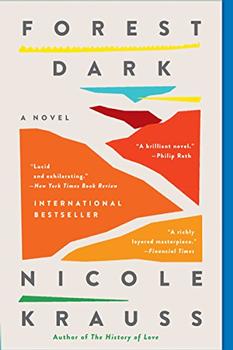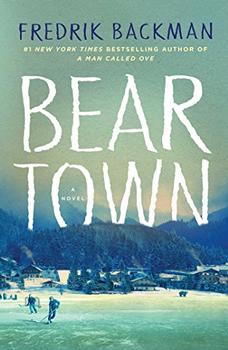Summary | Excerpt | Reviews | Beyond the book | Read-Alikes | Genres & Themes | Author Bio

What is the common thread shared by a book of stories? What is it about each one that determines its inclusion with the others? Scenes from Village Life, Amos Oz's latest collection, provides us with a treasure trove of ideas to ponder.
While initially these stories seem to be very much about Israeli life and culture, in fact, they are so much more. They speak of relationships each one of us wrestles with at some time - with ourselves, with the land, and with mortality (to name a few). Each one is achingly evocative and haunting, and though all the stories stand alone, main characters in one sometimes appear in the background of another; the idea being that no matter how solitary our lives may seem, we are a part of others' narratives as well - past, present, and future.
Oz sets his stories in the fictional farming village of Tel Ilan, the goings on of which serve as a parable for modern day Israel. Settled almost a hundred years earlier, in what was desolate wilderness, its villagers coaxed fruit trees, vineyards, and farms to flourish. In more recent years however, with most of the fields standing fallow, the village has been reinvented.
Art galleries, boutiques, and wineries open up to meet the needs of a steady stream of "week-enders." Entrepreneurs dream of what can be built once the old houses and homesteads are bought and torn down. There are some villagers for whom the future holds promise and others who simply mourn for what once was.
"Digging," the third of eight works, achieves storytelling perfection, not just in the way it is told but because it inspires readers to think carefully about the characters' relationships and their differing points of view. Nothing is ever black and white, there is no solution without pros and cons.
Elderly Pesach Kedam, former Knesset member, is a bitter and cantankerous old man. He lives with his middle-aged daughter Rachel on the farm that she and her husband ran until her husband died. Rachel, a literature teacher at the local school, dreams of the day she can leave the village and start to "live." Meanwhile, she employs a young Arab student, Adel, to help her maintain the property. He lives in a shed in the back garden.
Adel is a source of continuous irritation for Pesach, who does not trust or like him. Yet they share a commonality: they both hear digging under the house in the middle of the night. Pesach is convinced that it is Adel who is digging, and Adel believes Pesach is making the tapping, scraping sounds. Rachel, however, hears nothing and is sure they are both mistaken.
Initially, the sound of digging appears to be the only thing Pesach and Adel have in common; Pesach, soldier and politician, reflects on how he helped to shape Israeli history, while Adel, student and handyman, thinks about how history defined him as a Palestinian. One sees only differences, the other notices similarities despite the differences. One is quiet, the other talkative. One is a native, the other a settler.
One humid evening, as the "the trees in the garden were wrapped in damp vapor," Rachel and Pesach sit on the veranda. Adel soon joins them and pulls out a harmonica and starts to play. "That's a lovely tune," the old man says. "Heart-rending. It reminds us of a time when there was still some fleeting affection between people. There's no point in playing tunes like that today. They are an anachronism, because nobody cares anymore."
What does the noise represent? Why do these men relate to it the way they do? And as for Rachel, why is it that she hears nothing? Oz poses questions he doesn't necessarily answer and leaves readers to draw their own conclusions.
The last and shortest story in this collection, "In a Faraway Place at Another Time," is different from the others. While the setting could possibly be the village of Tel Ilan, the time is post-apocalyptic. Hauntingly dark, vivid words sear with sharp description:
"All night long, poisonous vapors blow in from the green swamp. A sweetish smell of decay spreads among our huts. Iron tools rust overnight, fences rot with damp mold, mildew eats at the walls, straw and hay turn black with moisture as though burnt in fire, mosquitoes swarm everywhere, our homes are full of flying and crawling insects."
Small but mighty, this story is a flawlessly crafted allegory, and on finishing the last word, one can't help but pause for a moment and contemplate the power of what one has just read. It serves to ask us all, no matter where in the world we reside, to think - to really think - about how the actions we take today will affect our tomorrows.
Readers for whom a book of metaphoric, fire-up-the-brain-cells material is just the thing will be thrilled and delighted to add Amos Oz's powerful and beautifully written collection to their must-reads.
![]() This review was originally published in The BookBrowse Review in October 2011, and has been updated for the
October 2012 edition.
Click here to go to this issue.
This review was originally published in The BookBrowse Review in October 2011, and has been updated for the
October 2012 edition.
Click here to go to this issue.

If you liked Scenes from Village Life, try these:

by Nicole Krauss
Published 2018
Bursting with life and humor, Forest Dark is a profound, mesmerizing novel of metamorphosis and self-realization—of looking beyond all that is visible towards the infinite.

by Fredrik Backman
Published 2018
The #1 New York Times bestselling author of A Man Called Ove returns with a dazzling, profound novel about a small town with a big dream - and the price required to make it come true.
Your guide toexceptional books
BookBrowse seeks out and recommends the best in contemporary fiction and nonfiction—books that not only engage and entertain but also deepen our understanding of ourselves and the world around us.